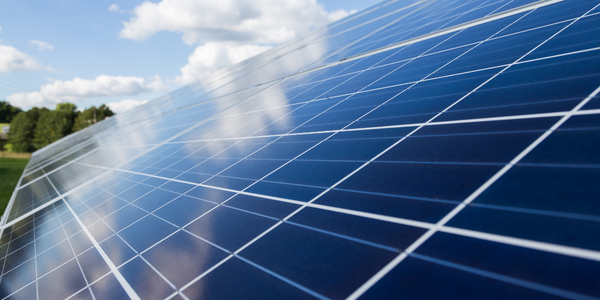
Technology Category
- Infrastructure as a Service (IaaS) - Private Cloud
- Networks & Connectivity - WiFi
Applicable Industries
- Electrical Grids
- Renewable Energy
Use Cases
- Behavior & Emotion Tracking
- Leakage & Flood Monitoring
Services
- Cloud Planning, Design & Implementation Services
- System Integration
The Customer
Network Corporation
About The Customer
The customer in this case study is a company that generates and sells electricity to residential, commercial, and industrial customers. They were faced with the challenge of monitoring the amount of electricity produced by 88,000 solar panels with a power generation capacity of 28 MW/h in a field size of 700 x 700 meters. The initial idea was a 13 kilometer wired optical network; however, the cost of over 1 billion yen made this approach expensive and impractical. Therefore, they needed a wireless gateway solution to communicate between the site and the monitoring center.
The Challenge
In 2018, the Japanese government approved the Fifth Energy Basic Plan, prioritizing renewable energy and setting it on a course to become the primary power source in Japan. This led to the re-introduction of solar panels as a renewable energy source. However, renewable energy sources such as solar power have weaker 'bearing capacity' than other power generation methods due to their characteristics. Solar power can be challenging to control because the output fluctuates based on weather conditions. If a large amount of electricity is supplied from the photovoltaic power generation sources to the grid when the power demand is low, the voltage and frequency can be disturbed, and the entire grid can become unstable. In some cases, it can lead to a large-scale power outage. This risk necessitated developments to solve problems like monitoring and controlling the amount of electricity produced by solar panels. NWC partnered with a client that generates and sells electricity serving residential, commercial, and industrial customers. The client needed to monitor the amount of electricity produced by 88,000 solar panels with a power generation capacity of 28 MW/h in a field size of 700 x 700 meters. The initial idea was a 13 kilometer wired optical network; however, the cost of over 1 billion yen made this approach expensive and impractical.
The Solution
The solution was to design a solar power monitoring system that was cost-effective, durable, supported wireless communication, and had flexible data acquisition. The ADAM-3600 was selected to monitor the power generated from the solar panels as it met the client's criteria. The ADAM-3600 collects power generation data from the solar panels and sends the collected data to the cloud using LTE communication. Eighteen units of ADAM-3600 with three programmable logic controllers connect all the solar panels. The ADAM-3600 intelligent Remote Terminal Unit is durable and can withstand temperatures between -40°C to 70°C. The monitoring system supports wireless communication such as LTE and WiFi. A stable, private, secure, and cost-effective wireless network enables accessible communication for data gathering and collection from solar panels. The remote management system also allows gathering data from numerous IOs and PLCs, helpful in integrating the system. The real-time monitoring gives live information which alerts the team in case of any abnormalities.
Operational Impact
Quantitative Benefit

Case Study missing?
Start adding your own!
Register with your work email and create a new case study profile for your business.
Related Case Studies.

Case Study
Remote Monitoring & Predictive Maintenance App for a Solar Energy System
The maintenance & tracking of various modules was an overhead for the customer due to the huge labor costs involved. Being an advanced solar solutions provider, they wanted to ensure early detection of issues and provide the best-in-class customer experience. Hence they wanted to automate the whole process.

Case Study
Vestas: Turning Climate into Capital with Big Data
Making wind a reliable source of energy depends greatly on the placement of the wind turbines used to produce electricity. Turbulence is a significant factor as it strains turbine components, making them more likely to fail. Vestas wanted to pinpoint the optimal location for wind turbines to maximize power generation and reduce energy costs.

Case Study
Siemens Wind Power
Wind provides clean, renewable energy. The core concept is simple: wind turbines spin blades to generate power. However, today's systems are anything but simple. Modern wind turbines have blades that sweep a 120 meter circle, cost more than 1 million dollars and generate multiple megawatts of power. Each turbine may include up to 1,000 sensors and actuators – integrating strain gages, bearing monitors and power conditioning technology. The turbine can control blade speed and power generation by altering the blade pitch and power extraction. Controlling the turbine is a sophisticated job requiring many cooperating processors closing high-speed loops and implementing intelligent monitoring and optimization algorithms. But the real challenge is integrating these turbines so that they work together. A wind farm may include hundreds of turbines. They are often installed in difficult-to-access locations at sea. The farm must implement a fundamentally and truly distributed control system. Like all power systems, the goal of the farm is to match generation to load. A farm with hundreds of turbines must optimize that load by balancing the loading and generation across a wide geography. Wind, of course, is dynamic. Almost every picture of a wind farm shows a calm sea and a setting sun. But things get challenging when a storm goes through the wind farm. In a storm, the control system must decide how to take energy out of gusts to generate constant power. It must intelligently balance load across many turbines. And a critical consideration is the loading and potential damage to a half-billion-dollar installed asset. This is no environment for a slow or undependable control system. Reliability and performance are crucial.

Case Study
Remote Monitoring and Control for a Windmill Generator
As concerns over global warming continue to grow, green technologies are becoming increasingly popular. Wind turbine companies provide an excellent alternative to burning fossil fuels by harnessing kinetic energy from the wind and converting it into electricity. A typical wind farm may include over 80 wind turbines so efficient and reliable networks to manage and control these installations are imperative. Each wind turbine includes a generator and a variety of serial components such as a water cooler, high voltage transformer, ultrasonic wind sensors, yaw gear, blade bearing, pitch cylinder, and hub controller. All of these components are controlled by a PLC and communicate with the ground host. Due to the total integration of these devices into an Ethernet network, one of our customers in the wind turbine industry needed a serial-to-Ethernet solution that can operate reliably for years without interruption.

Case Study
Temperature monitoring for vaccine fridges
Dulas wanted a way to improve the reliability of the cold chain, facilitating maintenance and ensuring fewer vaccines are spoiled. Dulas wanted an M2M solution which would enable them to record and report the temperature inside vaccine refrigerators.

Case Study
Hydro One Leads the Way In Smart Meter Development
In 2010, Ontario’s energy board mandated that time-of-use (TOU) pricing for consumers be available for all consumers on a regulated price plan. To meet this requirement, Hydro One needed to quickly deploy a smart meter and intelligent communications network solution to meet the provincial government’s requirement at a low cost. The network needed to cover Hydro One’s expansive service territory, which has a land mass twice the size of Texas, and its customers live in a mix of urban, rural, and remote areas, some places only accessible by air, rail, boat or snowmobile. Most importantly, the network needed to enable future enterprise-wide business efficiencies, modernization of distribution infrastructure and enhanced customer service. To meet these needs, Hydro One conceptualized an end-to-end solution leveraging open standards and Internet Protocols (IP) at all communication levels. The utility drew upon industry leaders like Trilliant to realize this vision.



